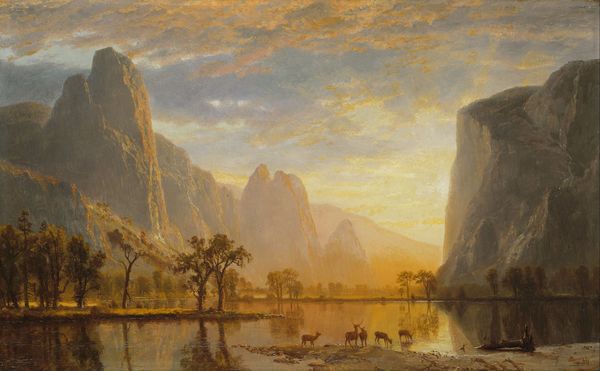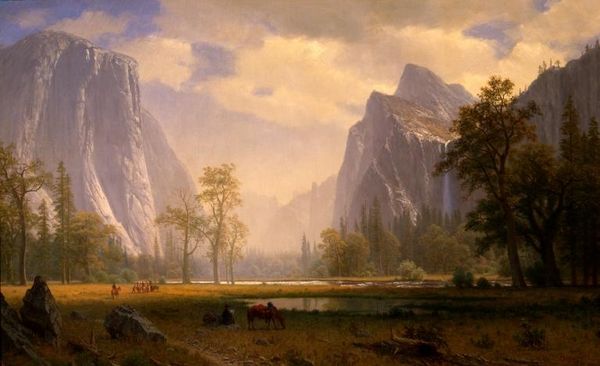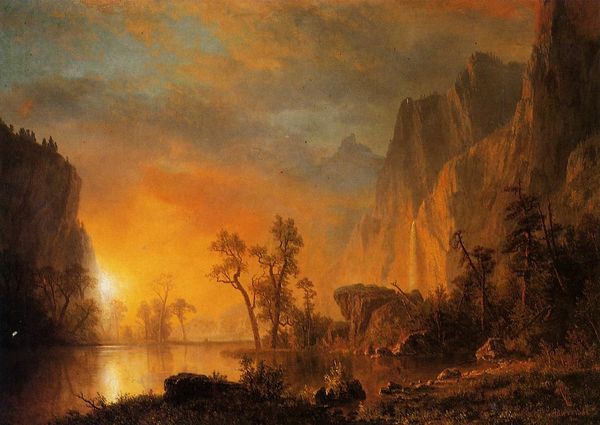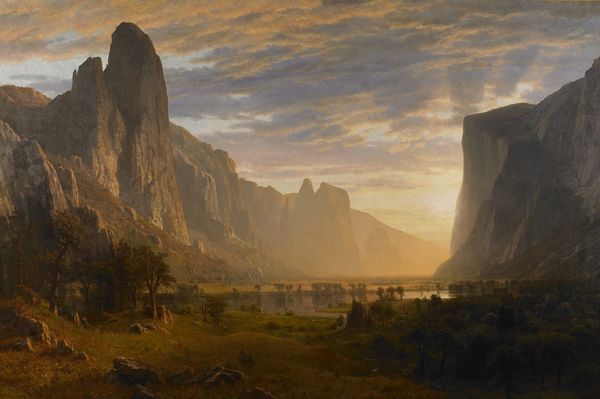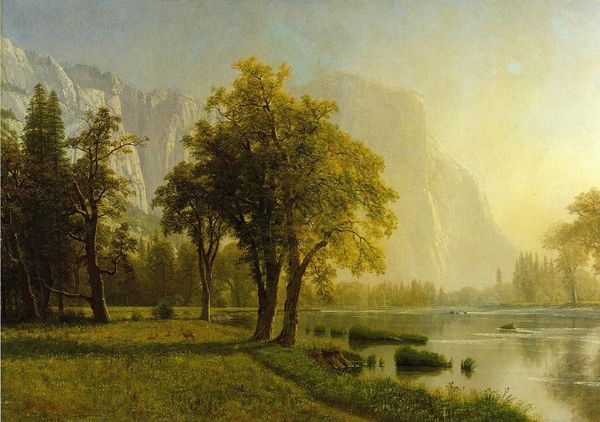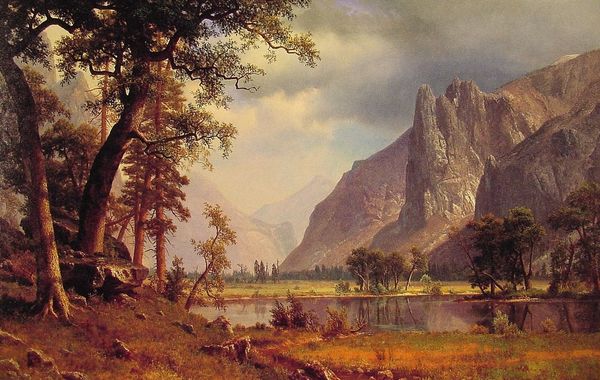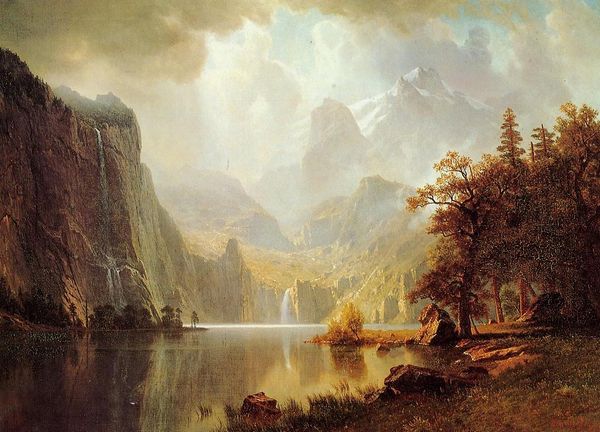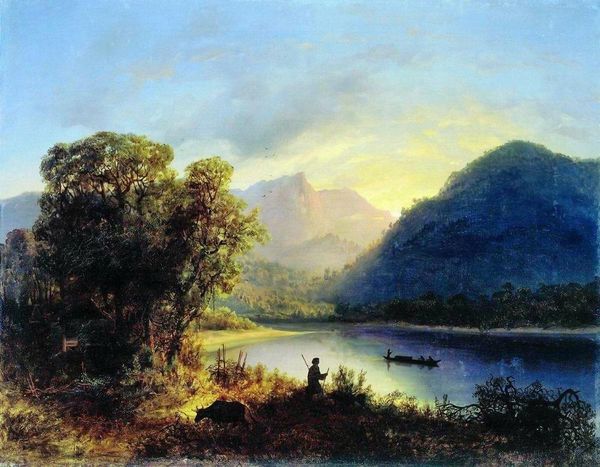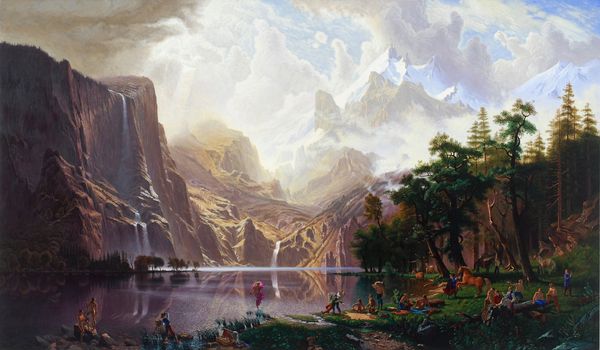
Dimensions: 33.66 x 47.31 cm
Copyright: Public domain
Editor: Here we have Albert Bierstadt's "Yosemite Valley Sunset," painted around 1865 using oil on canvas. It’s striking how the golden light bathes the whole scene in a hazy, almost dreamlike atmosphere. What’s your take on this work? Curator: This piece, while undeniably beautiful, needs to be understood within its historical context. Bierstadt, part of the Hudson River School, was creating these grand landscapes during a time of intense westward expansion in America. Consider the idea of Manifest Destiny, the belief that white Americans were destined to control the continent. Do you think this painting supports or complicates this narrative? Editor: I can see what you mean. The vastness and seeming emptiness of the landscape, combined with the small figures, suggests the potential for domination. Is it perhaps glorifying that ideology? Curator: It's more nuanced than simple glorification. Bierstadt, whether consciously or not, presents a vision of the West that encouraged settlement and resource exploitation, but also obscures the displacement and violence inflicted upon indigenous populations. Note the near absence of Native Americans in a landscape they had inhabited for millennia. Who really had the right to this sunset? Editor: So, even a landscape painting like this becomes a political statement, shaped by the power dynamics of the time. I guess I hadn’t thought about the ethics of landscape art quite like that. Curator: Exactly! Art isn't created in a vacuum. By exploring the historical, social, and political forces at play, we can start deconstructing these idealized images and have a more truthful dialogue about the past and the legacy of these works. Editor: That gives me a lot to think about, looking beyond just the aesthetic qualities and considering the broader implications. Thanks for sharing that insight.
Comments
No comments
Be the first to comment and join the conversation on the ultimate creative platform.
